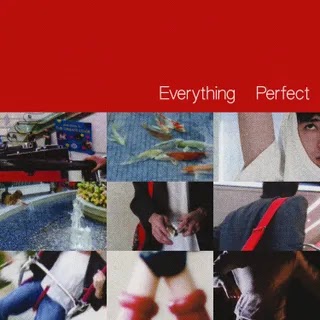Billy Corgan reenlists the creative core of James Iha and Jimmy Chamberlin for a lengthy synth-pop excursion that is clinically competent and rarely as thrilling—or thrillingly weird—as their previous work.
At the peak of his artistic powers, Billy Corgan couldn’t bear the thought of being less popular than Pearl Jam, less revered than Kurt Cobain, and less cute than James Iha. In the mid-’90s, he saw himself as a force of divine talent, and his sociopathic competitiveness, tyrannical perfectionism, and endless personal grievances were unseen in Chicago outside of the Bulls locker room. The most generous interpretation of his current irrelevance is that Corgan has come to accept it. He’s undoubtedly noticed how the indifference towards his new music, embarrassing ticket sales, and bountiful PR gaffes barely affect the brand at this point—“Riot Fest headliner” appears to be their permanent floor. But there’s a glimpse of the old Billy Corgan in Smashing Pumpkins’ new album CYR, backed by an enthusiastic new label that will actually bankroll his dreams of an animated series. A “return to form” can’t happen without a return to proper Smashing Pumpkins optics.
The profoundly inessential 2018 album SHINY AND OH SO BRIGHT VOL. 1 has been retroactively written off as tour promo, or at least a prelude to CYR, which can be viewed as the first true reunion of the Corgan/Iha/Jimmy Chamberlin creative core since 1995’s Mellon Collie and the Infinite Sadness. CYR is likewise being promoted as a double album, nevermind that it’s actually shorter than the 1998’s Adore or 2000’s MACHINA/Machines of God or that it arrives on streaming services as a unified block of 20 tracks.
In practice, CYR is already bisected into “singles” and “the other ones”—a whopping 10 singles were portioned out in five pairs over the past three months. The initial “CYR”/“The Colour of Love” drop was at least proof that Corgan’s populist instincts haven’t completely vanished. After a decade of unconvincingly cosplaying as a rootsy singer-songwriter, glam-rock yeoman, Rick Rubin salvage project, and an H&M soundtrack aspirant, Corgan created a role delicious enough to demand attention: corporate synth-pop impresario. Imagine him working with the same raw materials as Adore and swapping out the black cloak for a sleeves-rolled white blazer, hunched over the mixing console, forcing Jimmy Chamberlin to play with a click track, demanding another take from his female session vocalists until they heed his command of “Robert Palmer, but more neon.”
“CYR” and “The Colour of Love” are Corgan’s most convincing singles in ages, if only because he believes in their hooks enough to repeat them until they stick. Neither is really a bold new iteration of Smashing Pumpkins, just an alternate history where Corgan’s synth-pop muse is promoted to the big leagues and all the goth stuff is saved for the inevitable B-sides collections. And lest anyone think that Corgan has completely reinvented himself, that’s colour of love, not “color”—the seeming affectation of someone who believes the Queen’s English signifies art or a pledge of allegiance to touchstones Sisters of Mercy and Joy Division.
The subsequent singles slowly chipped away at the novelty, but at least demonstrated Corgan’s commitment to the bit—CYR’s lone alt-rock throwback “Wyttch” is a Guitar Center employee’s faded memories of customers fumbling through the “Thunder Kiss ’65” riff. Touring member Katie Cole and longtime collaborator/Black Eyed Peas associate Sierra Swan make the most of a rare Smashing Pumpkins supporting role, adding necessary melodic color and indicating that, indeed, other human beings were involved in the creation of a 72-minute album written and produced entirely by Billy Corgan. Ever the Pumpkins lifer, Chamberlin attributes his dry, mechanical playing to Corgan’s desire for an “early-’70s prog” sound; anyone else will just hear one of the most propulsive drummers in rock history relegated to a human metronome. The input of other members of Smashing Pumpkins has always been intentionally difficult to quantify, and without a single memorable guitar part throughout, Iha and bassist Jeff Schroeder are mere witnesses to Corgan treating CYR as his Logic X tutorial.
Corgan admitted he was initially frustrated by the learning curve of self-production until he recognized how technological limitations inspired the distinct sonic character of his formative bands. Some ear-turning elements scattered throughout are new for Smashing Pumpkins—the vaguely tropical sway of “Dulcet in E,” 808 handclaps on “Starrcraft” that could’ve been pulled from an OVO sampler pack—and they are also new to anyone toying with a DAW’s factory presets. But none of Corgan’s definitive qualities as a musician—symphonic grandeur, needling immediacy—translate to his production, which burdens CYR with out-of-the-box anonymity; a Smashing Pumpkins album that sounds like it was handed off to a guy at the Genius Bar.
The production’s clinical competency only highlights the assembly-line songwriting of CYR’s back half. Whereas the back half of Smashing Pumpkins albums are typically earmarked for oddball experiments and cult favorites, CYR doles out one three-and-a-half-minute song after another, working within nearly identical vocal cadences, song structures, textures, and even tempos eerily similar to Logic’s default of 120 bpm. Only the most blatant examples of Corganphonics break up the monotony—drawling out “swoon” for two seconds until it sounds like “swan” on the otherwise mesmerizing “Save Your Tears,” the phonetic (and incorrect) pronunciation of “Samhain” on “Wyttch.” Credit where it’s due: CYR has the least amount of filler of any supersized Smashing Pumpkins album because it has the narrowest gap between the singles and the deep cuts. I also can’t imagine anyone who wouldn’t trade any random three-song run for another “Glass and the Ghost Children” just to feel something.
CYR ends up being just as immersive as Smashing Pumpkins’ masterworks, just in a modern way. It’s the sort of album that gets accused of trying to game Billboard’s streaming calculations through sheer volume, single after single blending into a curiously ambient experience with Corgan’s voice faintly present in the background like an essential oil spray. But the real failing of CYR is the same one that’s plagued him since MACHINA effectively ended his imperial phase: No matter how much he writes about the nature of true love and magick and our connection to an eternal timeline, it’s impossible to grasp what any of it actually means to Corgan on an emotional level. “Drum and Fife” remains the most resonant song he’s made in the past 20 years and it’s simply an admission that he’s going to keep doing him even if no one gives a shit. Lest anyone doubt that Corgan can’t tell the difference between spinning his wheels and being on a roll, he’s already got nearly 50 songs ready for the next album.






%20Music%20Album%20Reviews.webp)









0 comments:
Post a Comment